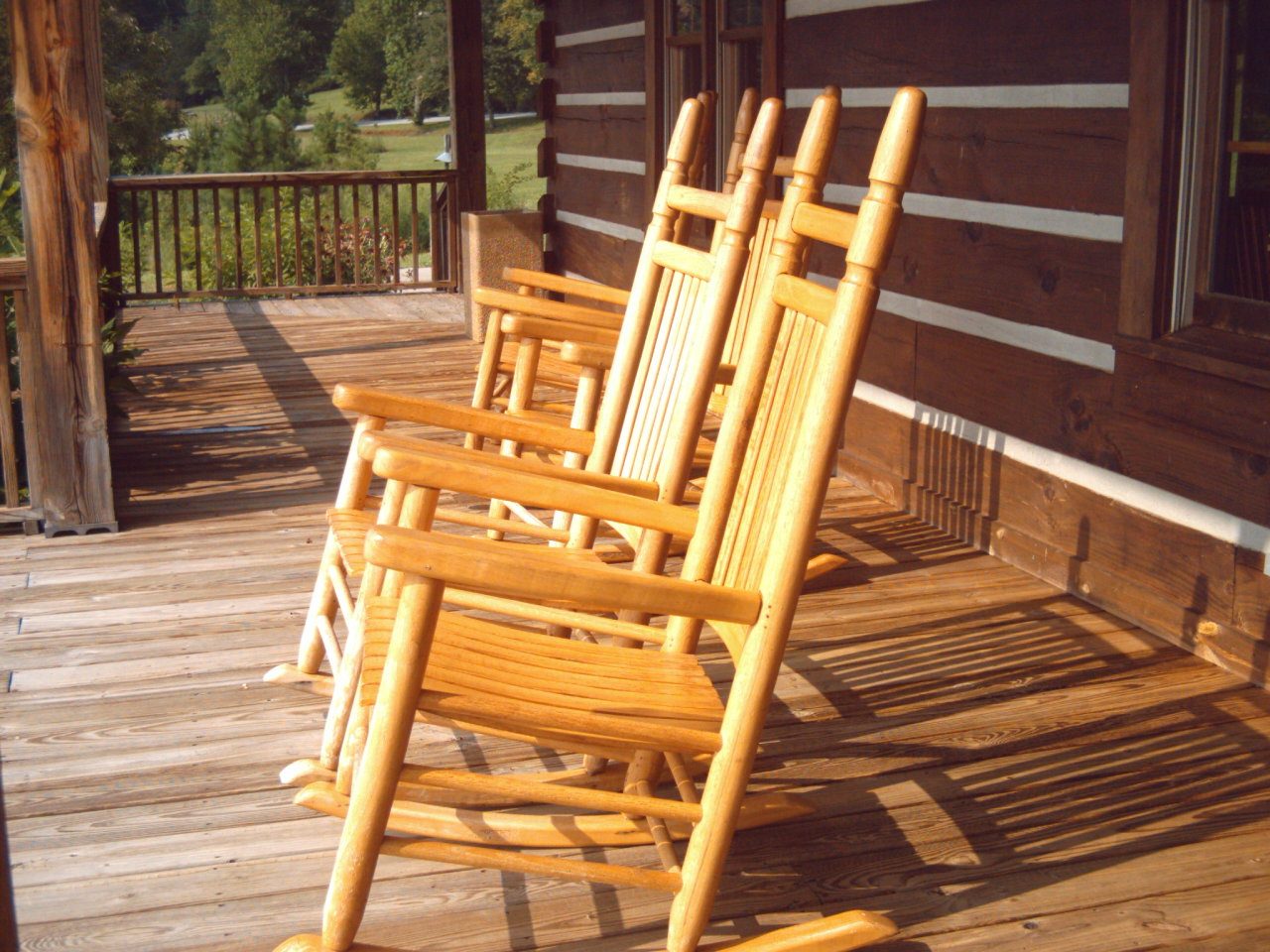One of the great woodworkers of modern time was a California man named Sam Maloof. Sam’s work is known for lean, graceful lines, with sculptured parts. His joints display beauty as well as strength, as his parts seamlessly blend into one another. His style, which involves a lot of sculpted parts, has been memorialized by the term “Maloof style.”
Of the more than 5,000 pieces that Maloof created in his career, the Sam Maloof rocking chair is the best known. I can find no accurate record of how many of these sculpted chairs were made, but originals have sold as high as $80,500 at auction. There is even one in the Smithsonian Museum, donated to the museum’s collection by a fan of the master craftsman’s work.
While Maloof passed away in 2009, his style lives on, with many experienced woodworkers making “Sam Maloof style” rocking chairs today. His designs combine utility with beauty, making them extremely popular. These chairs, while are clearly defined as being Sam Maloof style rockers and not Sam Maloof rockers sell for several thousand dollars.

Plans and videos exist for these rocking chairs, for those who are willing to spend the money. Apparently nobody is offering them for free. The chair is complicated enough, that you will most likely need the guidance of someone who has built the chair, through one of these video series. The best of them come from woodworkers who have worked directly with the master craftsman.
Calling him a master craftsman is not something to be taken lightly either. Sam Maloof was recognized by the McArthur Foundation, who give him a “genius” Grant for his work. This is a signal honor, but Sam, ever humble, merely referred to himself as a woodworker.
While the Sam Maloof rocker does not contain any decorative adornment, almost every part of the rocker is hand carved and fitted. The seat is carved in the old way, as hardback chairs once were, scooped out to provide a wooden seat that nevertheless conforms to the body of the user. Spindles in the back of the seat are not turned on a lathe, like most rockers, but rather carved, with a flat section where it contacts the lower to mid back, melding into a rounded upper that connected to the curved top rail.
One of the distinguishing design features of this chair design is that the various parts blend into one another. You can see this best in looking at the arms of the chair. The supports for the arms flare at the top, blending into the arms themselves. The arms blend into the back supports, doweled into the joint and flaring to blend into them.
The seat itself is mostly shaped with a small adze and a curved drawknife, rather than a chisel. This allows proper scooping out of the material, leaving a smooth, rounded surface, which is comfortable for sitting on.
The spindles of this chair design are unique, in that they are not straight, but rather contour back, providing lower lumbar support. If you were to cut these out of a solid block of hardwood, you would need to first use a template to cut the side, shaping the profile, then use a second template to shape the front side. Both of these cuts could be made on a bandsaw.
But that wouldn’t mean that the shaping of the spindles was finished. Each spindle will need considerable forming with rasps. Due to their shape, it would be difficult to round the edges with a router or shaper, meaning that they would have to be formed by hand.
Shaping the spindles can be a challenge in and of itself. First of all, they narrow down at both ends, so there are two transition points where you need to shape compound inside curves. Then there’s the cross section of the spindle itself. The upper and lower parts are nearly round, while the cross section of the part that supports your back can best be described as a smile, with a slight rounding on the front side and almost a half-circle on the back.
The rockers of the Sam Maloof rocker are laid up bentwood pieces, made by laminating several layers of 1/8” thick hardwood together over a mold. Once dried, they are removed and carved to shape, with a reverse curve at the very back, to act as a support, preventing the chair from tipping over backwards.
Purists make all the parts of a Sam Maloof style rocker by hand, using only hand tools, rather than power tools, honoring the master by following his own techniques. Many parts are shaped with chisels, planes and rasps, rather than being cut by power tools. It is not until final sanding that many of these craftsmen use a power sander.
You will need to be proficient at carving, if you want to build a Maloof rocker. Not just carving with chisels, but with rasps as well, as there are many parts which are shaped with the use of rasps, such as the arms I mentioned earlier. It is this use of rasps that allows the shape of the individual parts to flow into each other, making it so that you have to look at the grain of the wood, to determine where one part ends and the next begins.
While there are a few screws used on the rocker, the majority of the jointry is morticed and fitted. The screws which are used are capped with wood plugs, usually with a contrasting colored wood, making them an attractive part of the overall design.
It is this fine finish work and attention to detail that makes the Sam Maloof rocker so attractive. The finished chair becomes a heirloom piece of furniture for any family, something to be passed down through the generations. Regardless of what kind of wood is chosen for the rocker, the design and style make it an attractive piece of furniture that fits in with any décor.


